3.Servlet的ServletContext对象
一.建立项目servlet01
在入门Servlet项目中建立一个子项目模块(此处不再赘述如何建立),补全maven项目中的java和resources文件夹,添加类HelloServlet.java,添加web.xml中的映射关系,添加tomcat (注意保持只有一个jar包方式把所有项目的jar都打进来了,删除其他项目的jar包,添加自己的jar包),运行验证是否搭建正确!
二.ServletContext对象
在web容器启动时,它会为每一个web程序创建一个对应的ServletContext对象,用来代表当前的web的应用。
ServletContext对象的几个重点所用:
-
共享数据:对于几个不同的Servlet之间可以相互传递数据
-
获取初始化参数:在web.xml中配置的参数,可以被或得到
-
请求转发:获得请求转发给别的Servlet
-
读取资源文件:此处需要注意配置资源过滤防止读取不了资源文件
1.共享数据: 在servlet中保存的数据可以在另一个servlet中被访问
例子:
在HelloServlet中代码
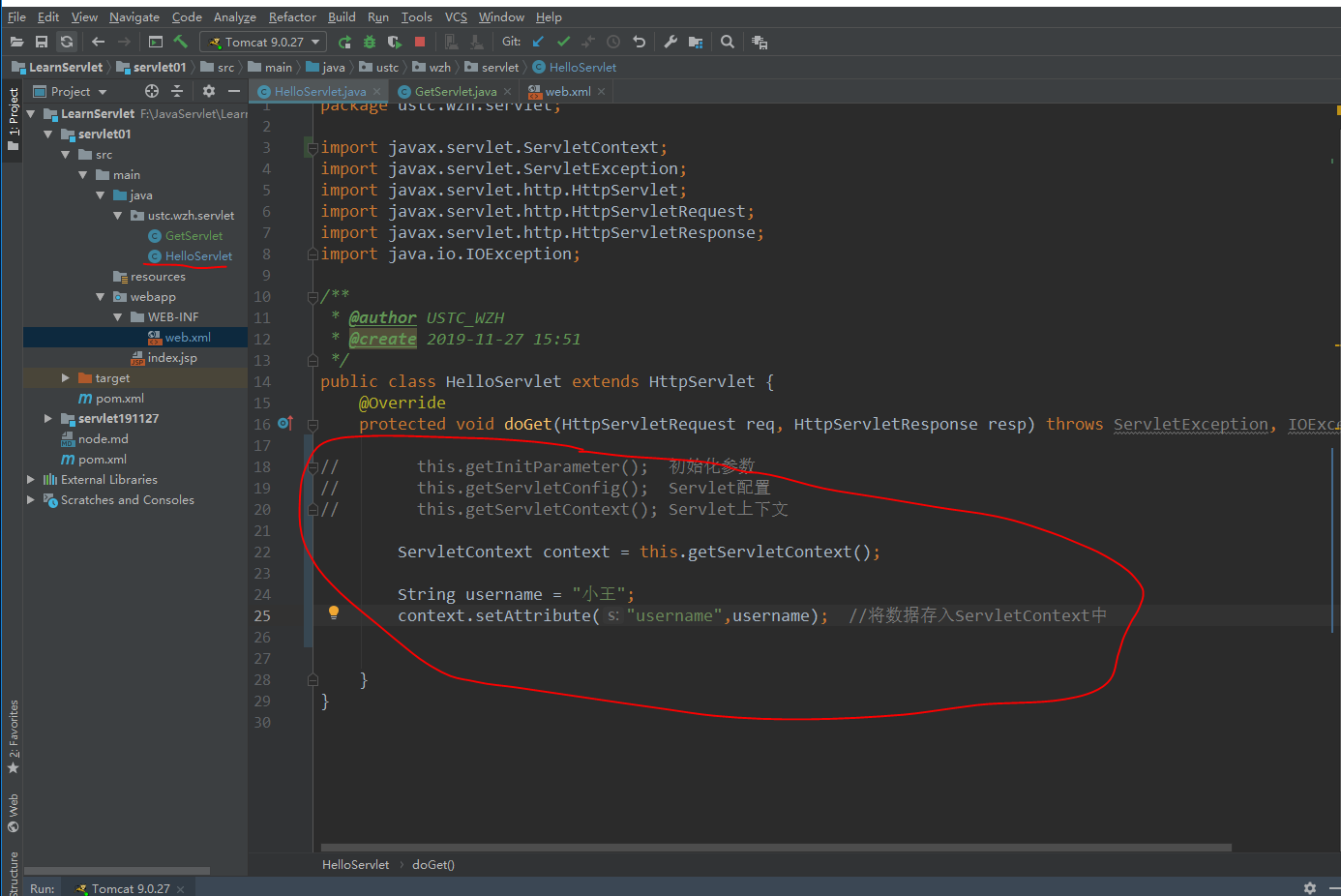
1 @Override 2 protected void doGet(HttpServletRequest req, HttpServletResponse resp) throws ServletException, IOException { 3 4 // this.getInitParameter(); 初始化参数 5 // this.getServletConfig(); Servlet配置 6 // this.getServletContext(); Servlet上下文 7 8 ServletContext context = this.getServletContext(); 9 10 String username = "小王"; 11 context.setAttribute("username",username); //将数据存入ServletContext中 12 13 14 }
在GetServlet中的代码
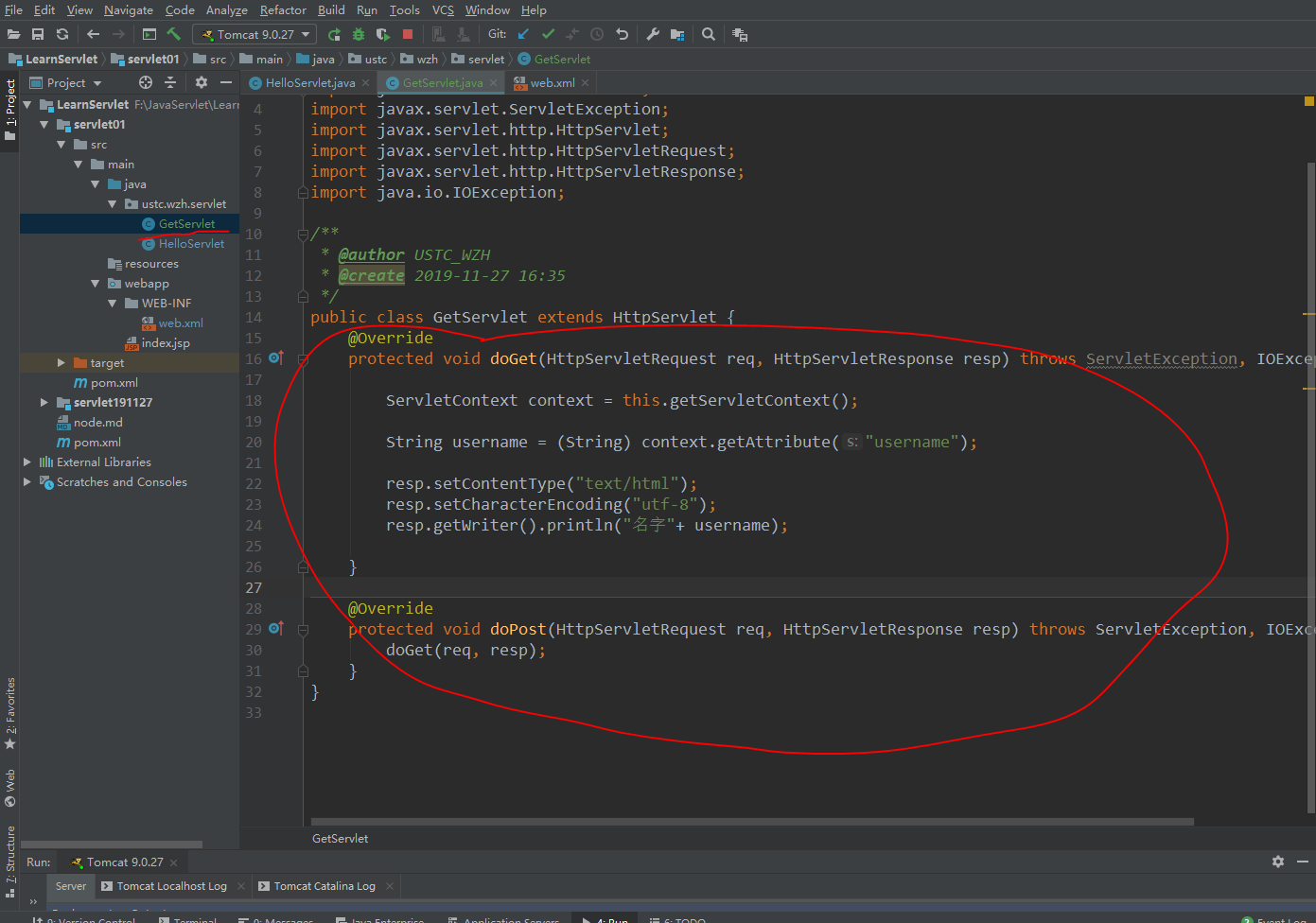
1 public class GetServlet extends HttpServlet { 2 @Override 3 protected void doGet(HttpServletRequest req, HttpServletResponse resp) throws ServletException, IOException { 4 5 ServletContext context = this.getServletContext(); 6 7 String username = (String) context.getAttribute("username"); //获取别的Servlet所保存的参数,实现数据共享 8 9 resp.setContentType("text/html"); 10 resp.setCharacterEncoding("utf-8"); 11 resp.getWriter().println("名字"+ username); 12 13 } 14 15 @Override 16 protected void doPost(HttpServletRequest req, HttpServletResponse resp) throws ServletException, IOException { 17 doGet(req, resp); 18 } 19 }
配置web.xml
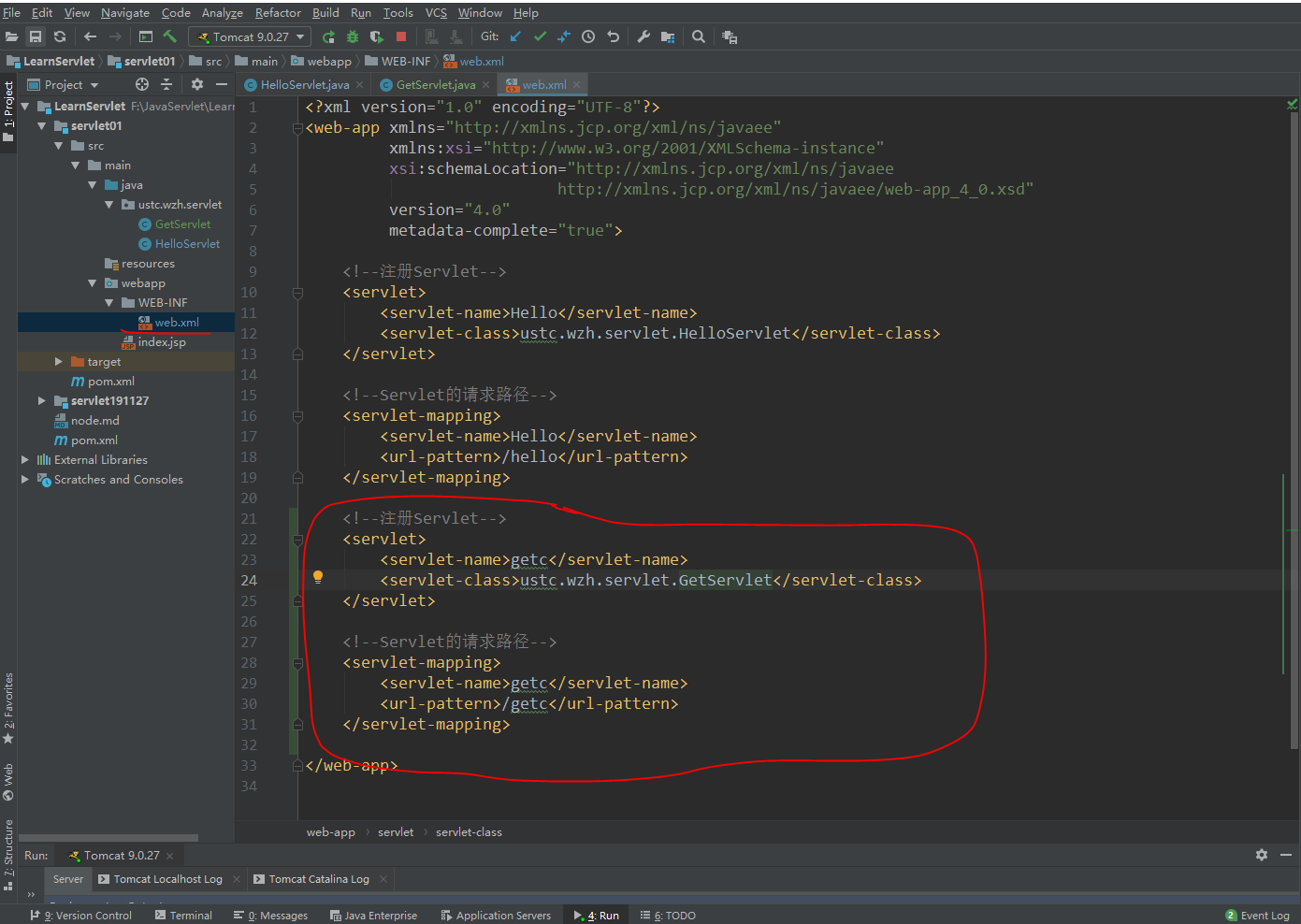
1 <!--注册Servlet--> 2 <servlet> 3 <servlet-name>getc</servlet-name> 4 <servlet-class>ustc.wzh.servlet.GetServlet</servlet-class> 5 </servlet> 6 7 <!--Servlet的请求路径--> 8 <servlet-mapping> 9 <servlet-name>getc</servlet-name> 10 <url-pattern>/getc</url-pattern> 11 </servlet-mapping>
启动tomcat执行程序
先执行http://localhost:8080/servlet01/hello 此时已经存入数据了,在执行http://localhost:8080/servlet01/getc 显示数据
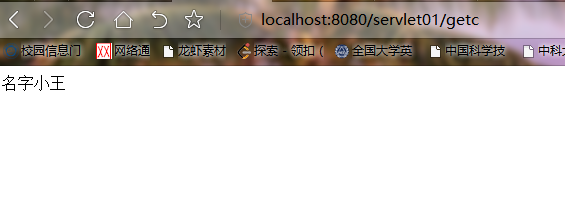
执行成功!
2.获取初始化参数配置
新建Java类为GetParam

1 public class GetParam extends HttpServlet { 2 @Override 3 protected void doGet(HttpServletRequest req, HttpServletResponse resp) throws ServletException, IOException { 4 5 ServletContext context = this.getServletContext(); 6 7 String url = (String) context.getInitParameter("url"); 8 resp.getWriter().println(url); 9 10 } 11 12 @Override 13 protected void doPost(HttpServletRequest req, HttpServletResponse resp) throws ServletException, IOException { 14 doGet(req, resp); 15 } 16 }
在web.xml中编写初始化配置项和映射路径

1 <!--配置一些web应用初始化参数--> 2 <context-param> 3 <param-name>url</param-name> 4 <param-value>jdbc:mysql://localhost:3306/mybatis</param-value> 5 </context-param> 6 7 <!--注册Servlet--> 8 <servlet> 9 <servlet-name>getParam</servlet-name> 10 <servlet-class>ustc.wzh.servlet.GetParam</servlet-class> 11 </servlet> 12 13 <!--Servlet的请求路径--> 14 <servlet-mapping> 15 <servlet-name>getParam</servlet-name> 16 <url-pattern>/getParam</url-pattern> 17 </servlet-mapping>

重新部署tomcat,获取参数成功!
3.请求转发
新建Java类为GetRequestForward
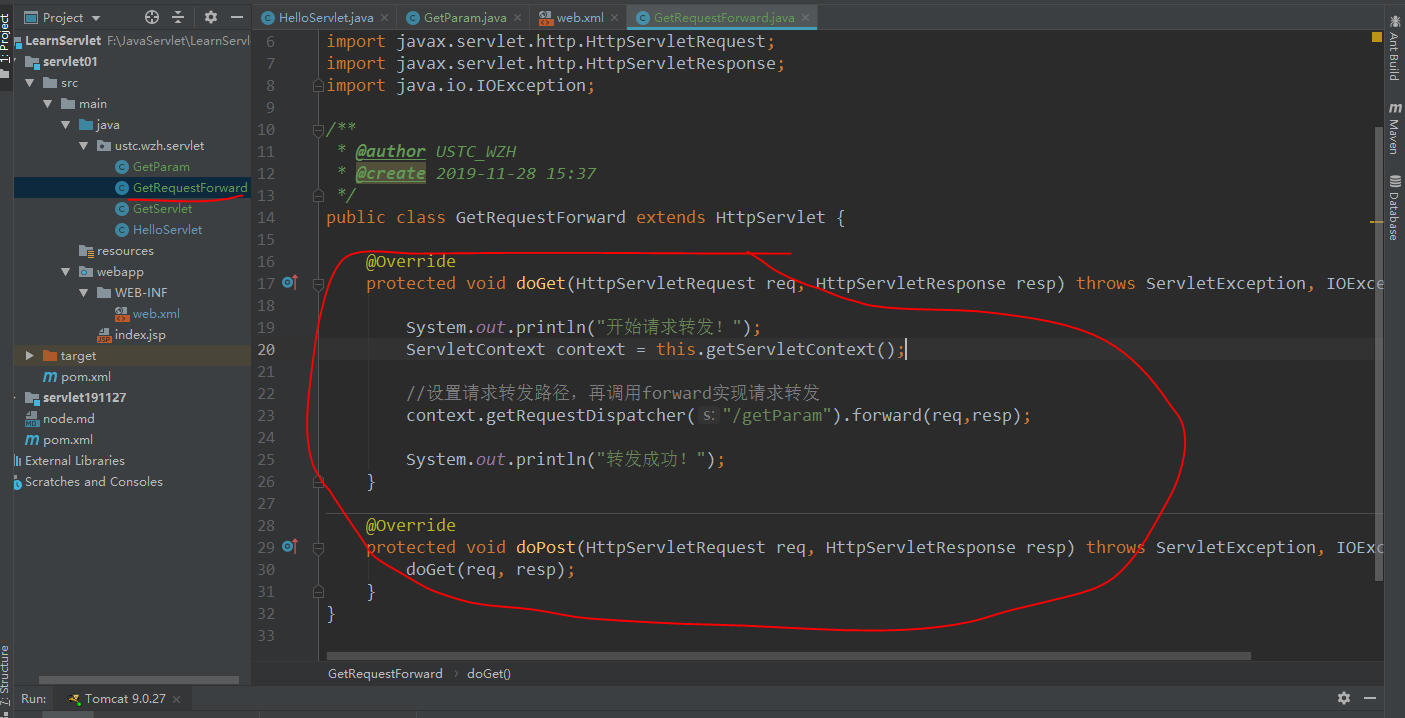
1 public class GetRequestForward extends HttpServlet { 2 3 @Override 4 protected void doGet(HttpServletRequest req, HttpServletResponse resp) throws ServletException, IOException { 5 6 System.out.println("开始请求转发!"); 7 ServletContext context = this.getServletContext(); 8 9 //设置请求转发路径,再调用forward实现请求转发 10 context.getRequestDispatcher("/getParam").forward(req,resp); 11 12 System.out.println("转发成功!"); 13 } 14 15 @Override 16 protected void doPost(HttpServletRequest req, HttpServletResponse resp) throws ServletException, IOException { 17 doGet(req, resp); 18 } 19 }
在web.xml中编写映射路径
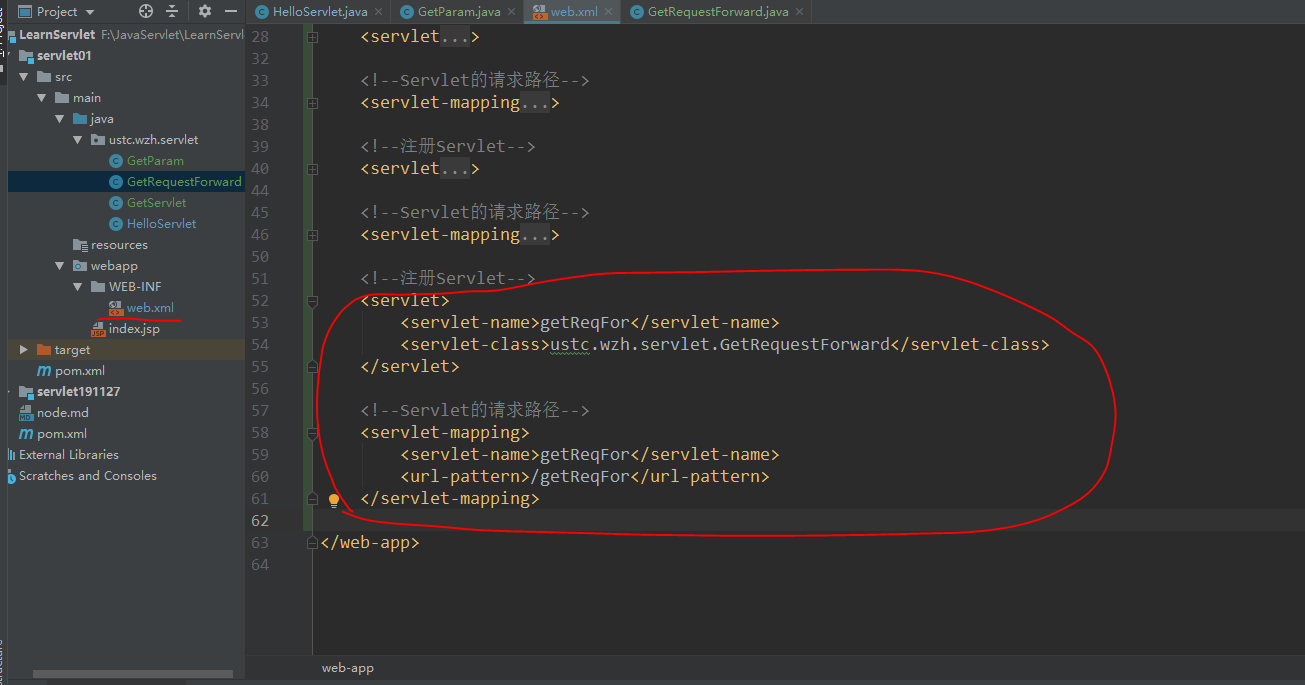
1 <!--注册Servlet--> 2 <servlet> 3 <servlet-name>getReqFor</servlet-name> 4 <servlet-class>ustc.wzh.servlet.GetRequestForward</servlet-class> 5 </servlet> 6 7 <!--Servlet的请求路径--> 8 <servlet-mapping> 9 <servlet-name>getReqFor</servlet-name> 10 <url-pattern>/getReqFor</url-pattern> 11 </servlet-mapping>


重新部署tomcat,转发成功!
4.读取资源文件
预处理:
由于我们在java目录下建立的properties和resources目录下建立的properties都被打报道同一路径下:classes,我们俗称这个路径为classpath;
1.建立properties文件:在resources目录下建立db.properties,在java目录下建立aa.properties

username=wzh password=123456
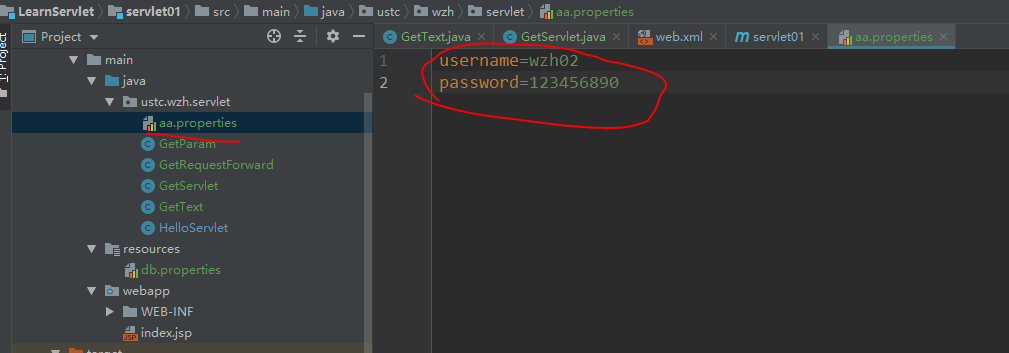
username=wzh02 password=123456890
2.修改当前项目下的pom.xml文件,添加配置
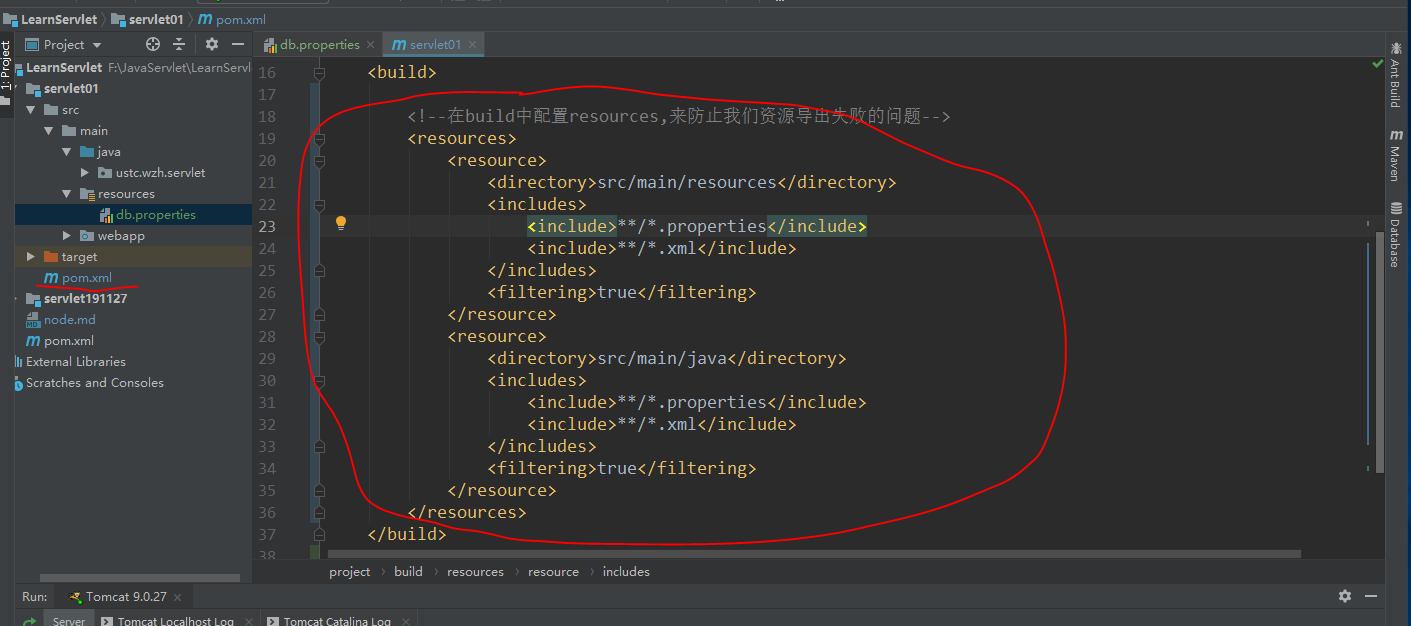
1 <!--在build中配置resources,来防止我们资源导出失败的问题--> 2 <resources> 3 <resource> 4 <directory>src/main/resources</directory> 5 <includes> 6 <include>**/*.properties</include> 7 <include>**/*.xml</include> 8 </includes> 9 <filtering>true</filtering> 10 </resource> 11 <resource> 12 <directory>src/main/java</directory> 13 <includes> 14 <include>**/*.properties</include> 15 <include>**/*.xml</include> 16 </includes> 17 <filtering>true</filtering> 18 </resource> 19 </resources>
3.编写读取配置文件的类:GetText
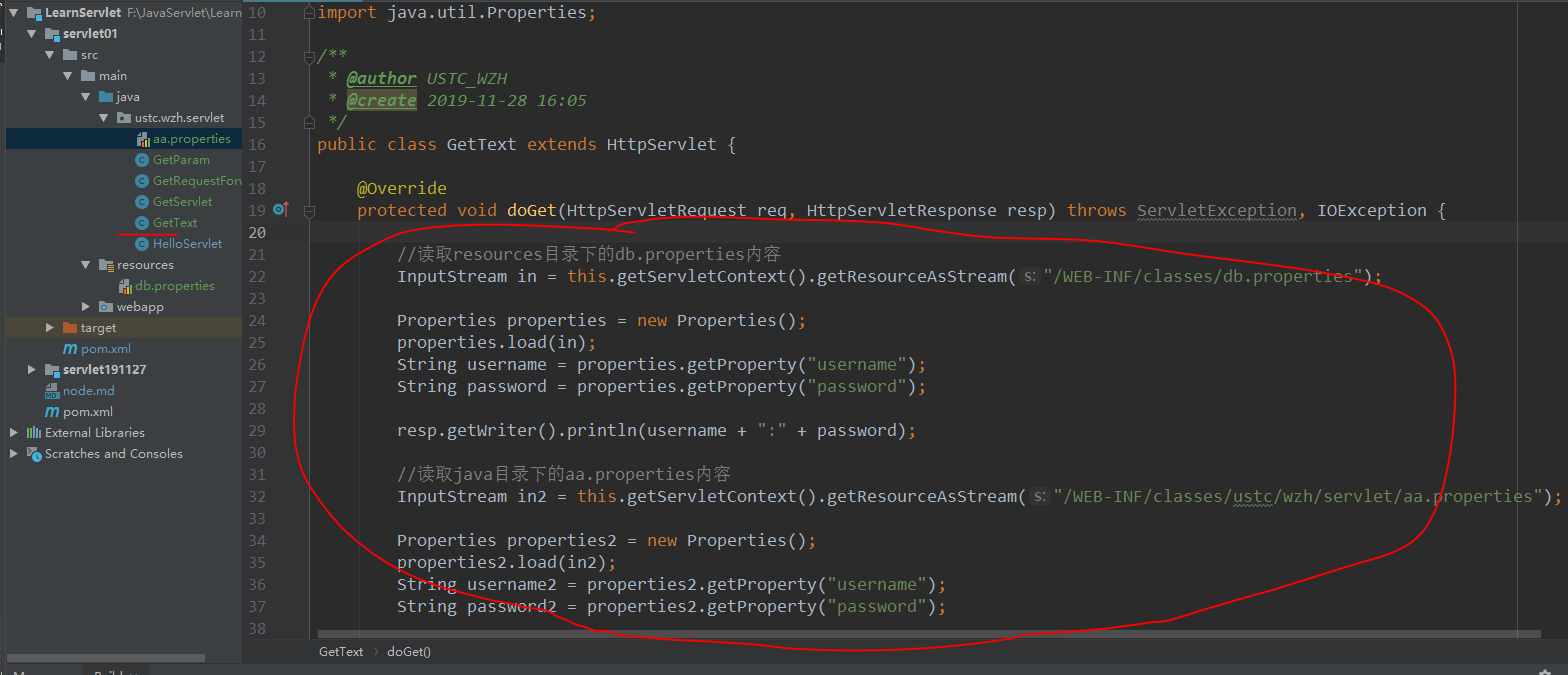
1 public class GetText extends HttpServlet { 2 3 @Override 4 protected void doGet(HttpServletRequest req, HttpServletResponse resp) throws ServletException, IOException { 5 6 //读取resources目录下的db.properties内容 7 InputStream in = this.getServletContext().getResourceAsStream("/WEB-INF/classes/db.properties"); 8 9 Properties properties = new Properties(); 10 properties.load(in); 11 String username = properties.getProperty("username"); 12 String password = properties.getProperty("password"); 13 14 resp.getWriter().println(username + ":" + password); 15 16 //读取java目录下的aa.properties内容 17 InputStream in2 = this.getServletContext().getResourceAsStream("/WEB-INF/classes/ustc/wzh/servlet/aa.properties"); 18 19 Properties properties2 = new Properties(); 20 properties2.load(in2); 21 String username2 = properties2.getProperty("username"); 22 String password2 = properties2.getProperty("password"); 23 24 resp.getWriter().println(username2 + ":" + password2); 25 26 } 27 28 @Override 29 protected void doPost(HttpServletRequest req, HttpServletResponse resp) throws ServletException, IOException { 30 doGet(req, resp); 31 } 32 }
注意:两个文件名是Rebuild project之后产生的
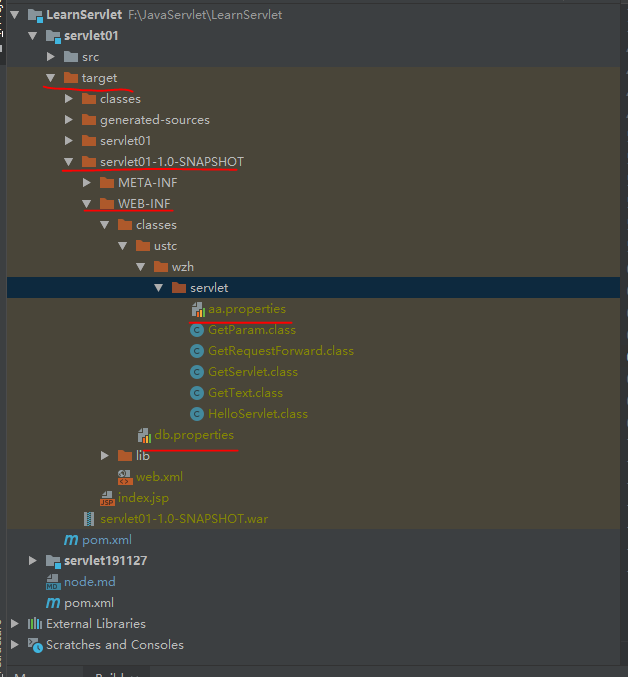
修改web.xml中的映射关系

1 <!--注册Servlet--> 2 <servlet> 3 <servlet-name>getText</servlet-name> 4 <servlet-class>ustc.wzh.servlet.GetText</servlet-class> 5 </servlet> 6 7 <!--Servlet的请求路径--> 8 <servlet-mapping> 9 <servlet-name>getText</servlet-name> 10 <url-pattern>/getText</url-pattern> 11 </servlet-mapping>

重新部署tomcat,读取资源文件成功!


